
14 minute read
SUSTAINABLE AND INNOVATIVE
SUSTAINABLE & INNOVATIVE
Sustainability is an intrinsic part of Jan De Nul’s DNA: we are a pioneer in building offshore wind farms, we reduce the emissions of our fleet at a record pace and we develop innovative technologies to keep our environment clean.
Advertisement
PIONEERING OFFSHORE WIND FARM WORKS IN TAIWAN
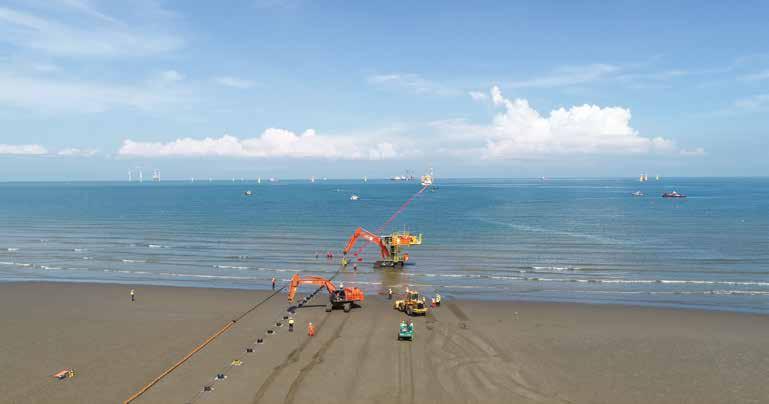
The amphibious dragline Starfish digs in the cables for the Formosa 1 project. Thanks to the elevated position of motor and cabin, this machine can work in waters of a couple of metres deep.
Formosa 2 OWF: 47 wind turbines, generating 376 MW
Formosa 1 OWF: 22 wind turbines, generating 128 MW
Offshore wind energy expansion is accelerating worldwide. Jan De Nul is now also exporting its know-how from Europe to Asia and is building three offshore wind farms off the Taiwan coast. “A pioneering project that attracts a lot of attention here”, says Virginie de Theux, who helps to keep the gigantic logistic operations on the Asian island on the right track.
In Europe, Jan De Nul has already built a solid track record when it comes to offshore wind farms: Bligh Bank Phase II off the coast of Zeebrugge, Alstom off the coast of Ostend, Karehamn in Sweden, Kriegers Flak in Denmark, Tahkoluoto in Finland, Global Tech One and Butendiek in Germany. All these projects have played an important part in the transition to 100 percent green and renewable energy. In the UK, Jan De Nul will install the turbines at the Dogger Bank Wind Farm, that when built, will be the largest offshore wind farm in the world. Dogger Bank will supply energy to 4.5 million households, around 5 percent of the UK’s total energy demand.
TPC Changhua OWF: 21 wind turbines, generating 109 MW
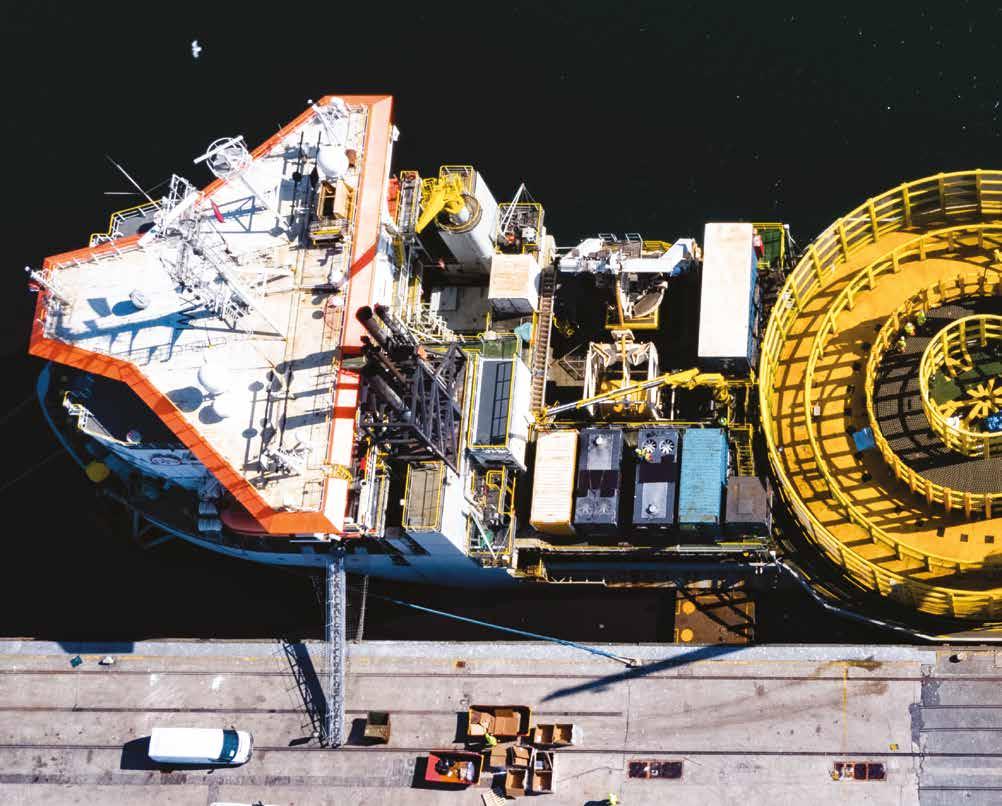
Willem de Vlamingh installed all offshore cables for the wind farm project Formosa 1 and will do the same for Formosa 2.
HAT-TRICK IN TAIWAN
After Europe, it’s now Asia’s turn. Jan De Nul scores a hat-trick: the company recently won three large offshore wind farm contracts in Taiwan.
Formosa 1 is the first commercialscale offshore wind farm in Taiwan. The wind farm with an overall capacity of 128 MW is already up and running, with 22 wind turbines operating at full capacity. Jan De Nul delivered and installed the monopiles, transition pieces and cables.
More to the south in Changhua, we are currently building the Taiwan Power Company Offshore Windfarm Phase 1 Project - Demonstration, with a capacity of 109 MW. In a joint venture with Hitachi, Jan De Nul is the main contractor for this project and is responsible for the overall design, construction and installation of the wind farm. This project also includes the installation of the onshore cable and the renovation of an existing power distribution plant of the Taiwan Power Company, plus Jan De Nul and Hitachi will provide five years operation and maintenance for the offshore wind farm. The jacket foundations, cables and wind turbines have all been manufactured, with installation planned between May and September 2020. Jan De Nul has also started building the offshore wind farm Formosa 2, which will have a capacity of 376 MW, triple the capacity of Formosa 1. The 47 wind turbines will supply green energy to 380,000 homes. Jan De Nul is responsible for the design, construction and installation of the jacket foundations – a technical masterpiece in water depths up to 55 metres – and for the design, delivery and installation of all subsea cables. Formosa 2 is planning to be operational in 2021.

Virginie de Theux, Project Engineer
Virginie de Theux is responsible in Taiwan for the logistics for the wind farms under construction.
“Both the ships and the components for the wind farms come from all over the world. Our team makes sure that the components and equipment all arrive at the site on time, both in the port and offshore. I also keep a close eye on the planning to make sure we have sufficient manpower to bring this entire operation to a successful conclusion. All these people work the whole day long and thus have a major appetite, so catering is another important part of my job.”
“It is a tough job. The procedures imposed by the authorities require a lot of attention and planning and the communication is mostly in Chinese. But it is also a great job. Watching these gigantic turbines being erected at sea really appeals to one’s imagination. Besides, I can help to build the future here. We help to fight back against climate change.”

The offshore wind farms in Taiwan are truly pioneering projects in Asia. Does this attract much local attention?
“Definitely. Climate change is high on the global agenda. The wind farms off the coast of Taiwan are followed up very closely. Taiwan has an ambitious plan to transition to green energy production in four years’ time and to increase its energy independence. Wind energy is playing a crucial part in these ambitions. Besides, many other countries within the region have similar plans. Japan, for instance, is working on floating offshore wind farms. And developers also follow the projects with great interest. Ecology goes hand in hand with the economy. In Asia, a whole new market may open up to us. The offshore wind farms in Taiwan will give a major boost to wind energy.”
What are the biggest challenges for the construction of offshore wind farms in Taiwan?
“Jan De Nul has a lot of experience with offshore wind farms. But you can’t just copy-paste your approach. In every project, the specific circumstances differ a great deal. Our offshore projects can be completed in a couple of months, this is hugely intensive and amazingly fast. But the preparatory phase takes a lot more time.”
“In Taiwan, we’re facing some highly specific circumstances. To begin with, of course, Taiwan is an island. This already represents a major challenge from a logistic point of view. We work in tremendously deep waters, with water depths up to 55 metres. Furthermore, we have to consider potential typhoons and earthquakes. We work at sea, between 4 and 9 kilometres off the coast, and have emergency plans to immediately bring all our people to safety. The foundations are designed to withstand worst case scenarios. The wind farms are designed and built so that they can withstand even the most severe earthquake. Our engineers are really performing miracles here.”
Which role does Jan De Nul play in the steady progress of offshore wind energy?
“The wind farms that we’ve built in Europe are important references. It requires a great deal of expertise, a large network and also considerable logistical clout to build a wind farm at sea. Only a few companies have the technical know-how and can handle such an enormous logistic operation.”
In your opinion, how will the world of offshore wind energy evolve in the coming years?
“I think that we’re now witnessing the beginning of a huge boom. The transition to green, renewable energy gathers pace, but there is still a lot of progress to be made. In Europe, offshore wind farms are well established, elsewhere in the world more countries and companies will follow suit. When you consider that the largest wind farm in Taiwan will supply energy to 380,000 homes, you know that wind energy will have a huge impact on the production of energy and on climate change. This transformation is gaining momentum and cannot be stopped anymore.”
Virginie de Theux, Project Engineer
Jan De Nul is responsible for the entire design, manufacture and installation of the Taiwan Power Company Offshore Windfarm Phase 1 Project - Demonstration.
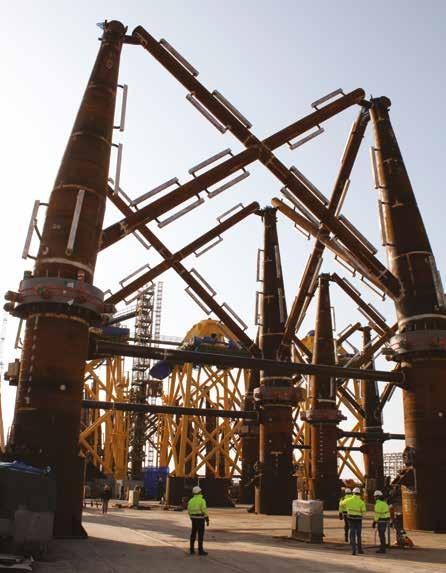
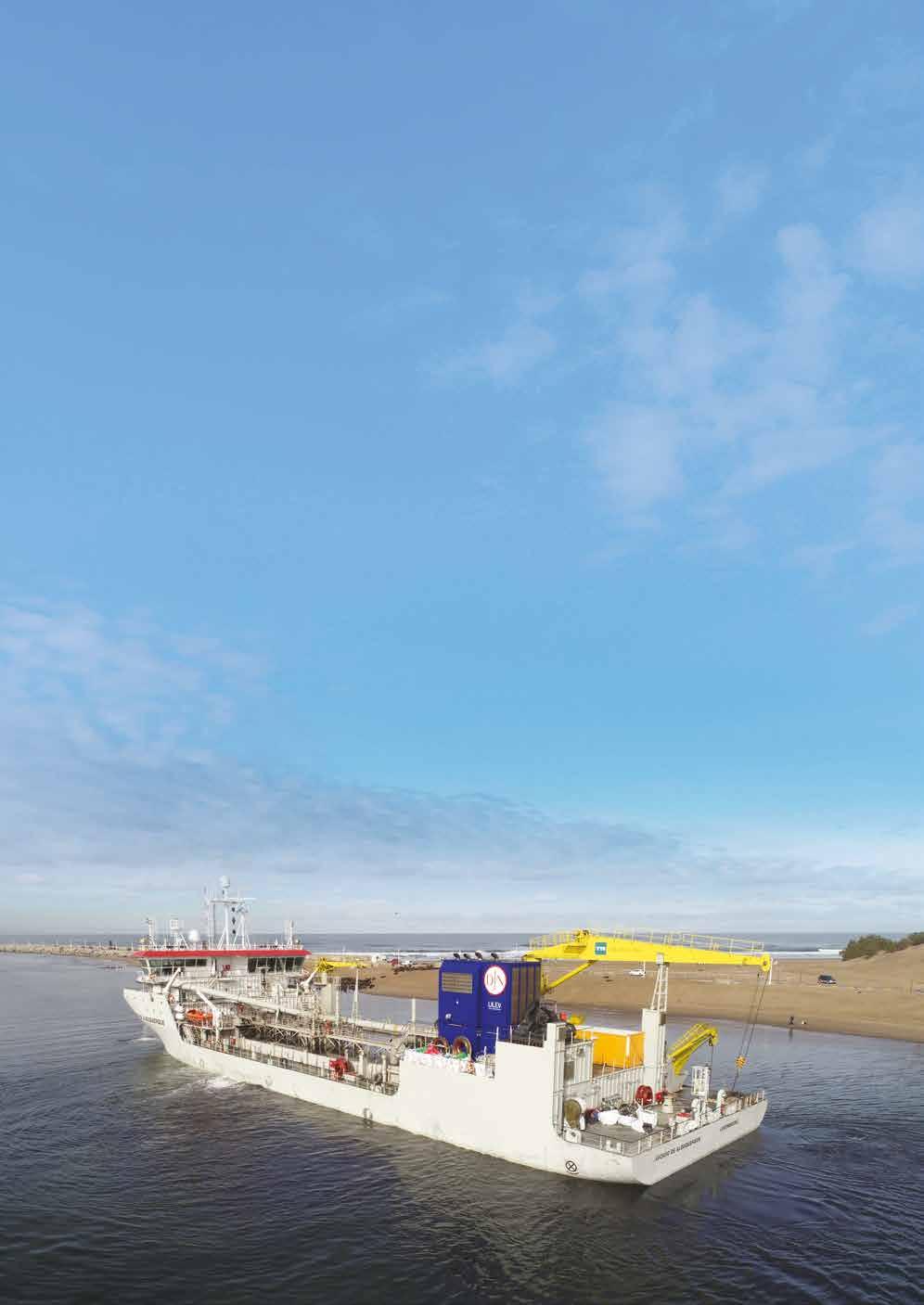
The Afonso de Albuquerque had the honour to be the first operational ULEv ever.
A NEW GENERATION OF ULTRA-LOW EMISSION VESSELS
With the Afonso de Albuquerque, Jan De Nul deploys the very first so-called ULEv dredger. ULEv stands for Ultra-Low Emission vessel. The innovative, sustainable vessel that received its baptism of fire in Quequén, Argentina, heads a whole new generation of low-emission vessels.
“This trailing suction hopper dredger is the first of a whole generation of environmentally friendly dredging vessels”, explains Marcelo Persichini, who as Project Engineer coordinates the maintenance dredging works in the ports of Quequén and Bahía Blanca. “An ingenious system filters the exhaust gases before they are emitted. The filter eliminates the toxic substances and reduces the harmful emission to an absolute minimum. The diesel particulate filter extracts up to 99 percent of all particulate matter and soot particles from the exhaust gases.”
The Afonso de Albuquerque was used for deepening the access channel and swing basin of the port. The ship will also be used for the multi-annual maintenance dredging works in this port and for other maintenance dredging works in Argentina.
Our Ultra-Low Emission vessels can be recognised by their blue funnels.
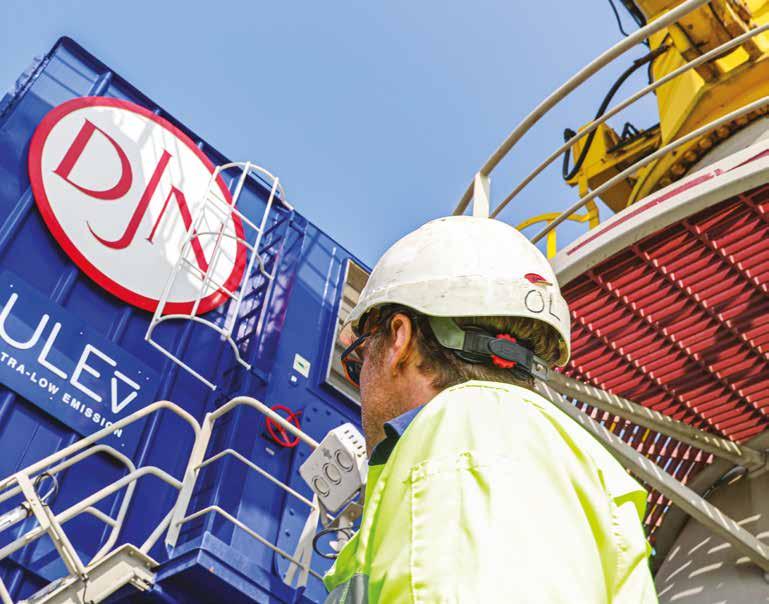

Marcelo Persichini, Project Engineer
Jan De Nul is responsible for deepening the access channel and swing basin of the port of Quequén.
SCOOP WITHIN THE SHIPPING INDUSTRY
Jan De Nul got the inspiration for its ULEvs in Switzerland. The Swiss tunnel industry played a pioneering role in filtering exhaust gases. To ensure that workers who are working in long tunnels breathe in clean air, the vehicles and machines are all equipped with an exhaust gas filter system. Jan De Nul succeeded in translating this technology to the shipping industry and in developing the innovative, pioneering ULEv solution internally.
The baptism of fire of the Afonso de Albuquerque, a trailing suction hopper dredger with a dredging capacity of 3,500 cubic metres, was a major success according to Marcelo Persichini. “Also in Argentina, climate change is a hot topic. The port of Quequén is right next to one of the most popular beaches, so there was a great deal of interest in our first ULEv. We are very proud that we were the first to introduce this technology. Jan De Nul has a long track record in Argentina and our ULEv vessel further strengthened our reputation as an innovative pioneer.”
Quequén: To be able to open the port to ships with a draught of more than 14 metres, the harbour basin and the canal in the inner and outer harbour must be deepened to obtain a depth of about 15 metres.

Bahía Blanca: This port is known for its export of corn, oil and fertilisers. It is one of the most important ports in Argentina as it is the only one with a natural depth of 12.80 metres. Dredging campaigns ensure that the depth of the main canal is maintained at 15.10 metres.
OUTPERFORMING EVEN THE STRICTEST STANDARDS
The Afonso de Albuquerque soon had company. Jan De Nul already expanded its fleet with seven ULEvs. All our new next generation vessels are low-emission vessels.
Jan De Nul is the first dredging company in the world to launch dredging vessels that meet the most stringent European emission standards, such as the Stage V standards. These European Stage V emission standards for inland navigation vessels go a great deal further than the standards of the International Maritime Organisation. Because dredging vessels are mainly active in estuaries, close to the coast or in ports – often close to highly populated areas – Jan De Nul is committed to maximising the reduction of harmful emissions. We want to go beyond what is imposed by the shipping authorities. Far beyond.
BELGIUM’S MOST SUSTAINABLE CONSTRUCTION SITE
Maintenance dredging works in the marinas of Nieuwpoort have set new sustainability standards. Jan De Nul fuels its dredging vessels with renewable biofuel and reduces the energy consumption in the site offices by 80 percent. This has lowered the CO 2 emission of the dredging works by 15 percent, which is a first in Belgium.
In 2006, Jan De Nul started the maintenance dredging works in the harbour channel and marinas of Nieuwpoort. Under the name ‘Act Green’, Jan De Nul has committed itself to reduce the CO 2 emission during these dredging works by 15 percent every year. As such, Jan De Nul is the first dredging company to include a climate ambition in writing, within a commercial contract.
VESSELS SAIL ON RENEWABLE BIOFUEL
The two split hopper barges that carry out maintenance dredging works, the Magellano and the Verrazzano, sail on drop-in biofuel: a high-grade fuel originating from certified and sustainable waste flows. As such, the vessels not only emit less CO 2 but also a lot less particulate matter.
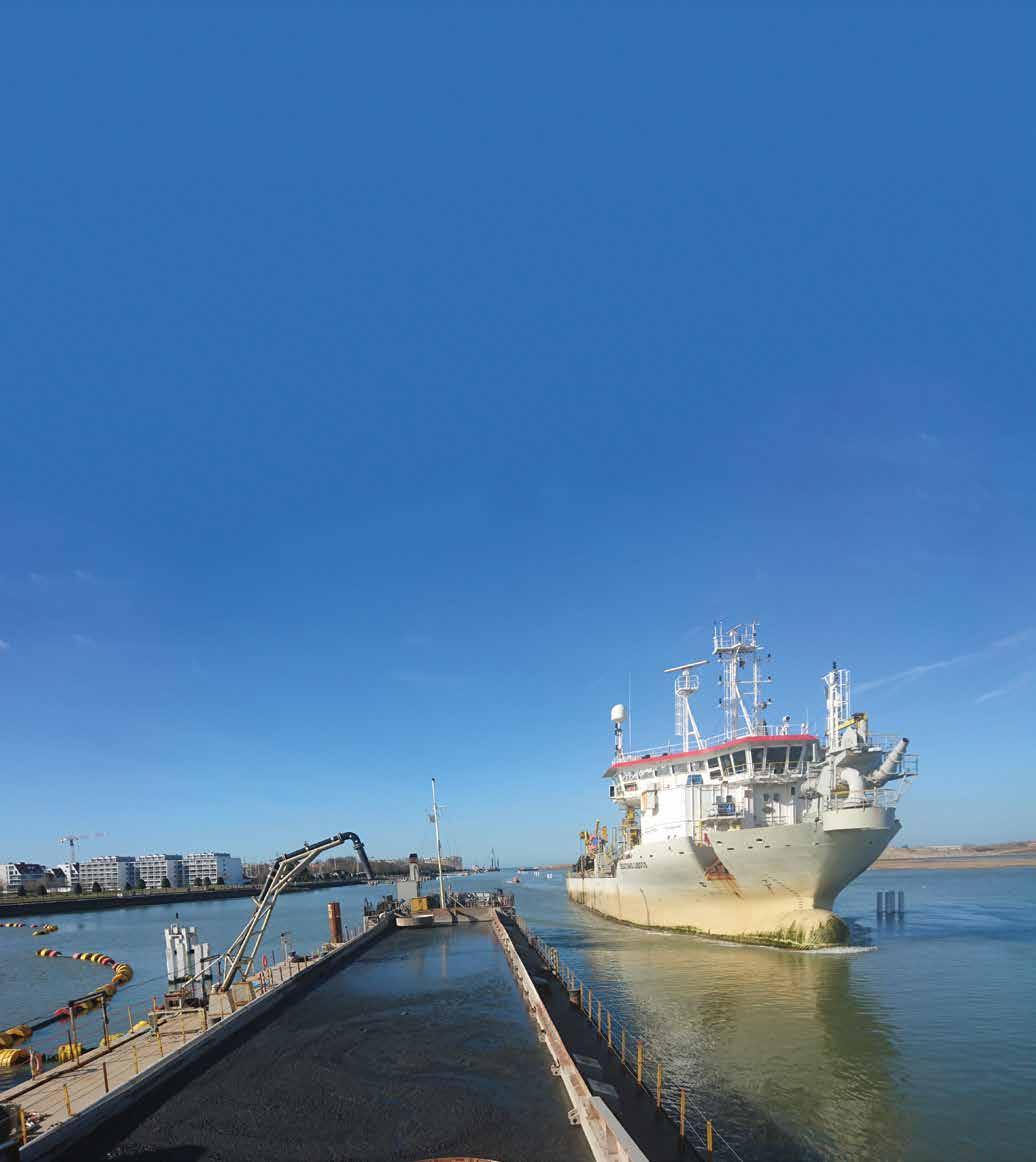
In addition to the Magellano and the Verrazzano, Jan De Nul has, with the Alexander von Humboldt, a third ship in the Benelux sailing on sustainable fuel.
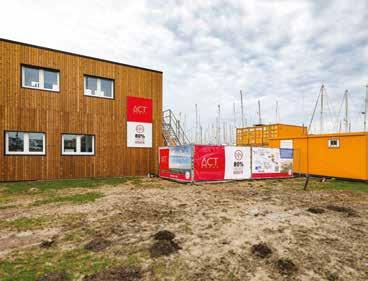
ECOLOGICAL SITE OFFICE
Within the scope of the Act Green programme, Jan De Nul Group is turning the marina of Nieuwpoort into Belgium’s most sustainable construction site. The state-of-the-art, energy-efficient construction site shed will consume about 80 percent less energy than your average site office. Extra insulation (on roof, walls and floor), triple glass windows and door pumps keep the cold out and the heat in. Solar panels on the roof provide energy, with a heat pump to ensure heating and cooling. In the offices, you won’t find conventional lamps but modern, energy-efficient LED lighting.
PIONEERING ROLE
With this project, Jan De Nul wants to claim its role as an absolute pioneer in the development of a sector-wide programme for reducing the CO 2 emission. By 2022, the Belgian government wants to include a commitment to realise a CO 2 reduction of minimum 15 percent across eighty percent of the maintenance dredging contracts in Flanders.
BEACH CLEAN-UPS
Each year, over ten million tonnes of plastic end up in our oceans. By organising beach clean-ups across the world, Jan De Nul contributes to the fight against plastic pollution.

From 440 kilograms near our site in Ghana up to a formidable 4.5 tonnes on the beach where we are currently working in Benin. In cooperation with local residents, our employees have already collected an impressive amount of waste during beach clean-ups. And yet, the need remains high. That’s why the sustainability action plan of Jan De Nul is very ambitious. The protection of oceans, seas and rivers is an absolute top priority for us. By keeping our natural working area clean and free from plastic litter, we help fulfil our social responsibility.
Flanders is struggling with many underutilised, and often contaminated sites. Envisan, the environmental division of Jan De Nul, remediates contaminated sites and Jan De Nul subsidiary PSR, Partner in Site Reconversion, gives these sites a new life.
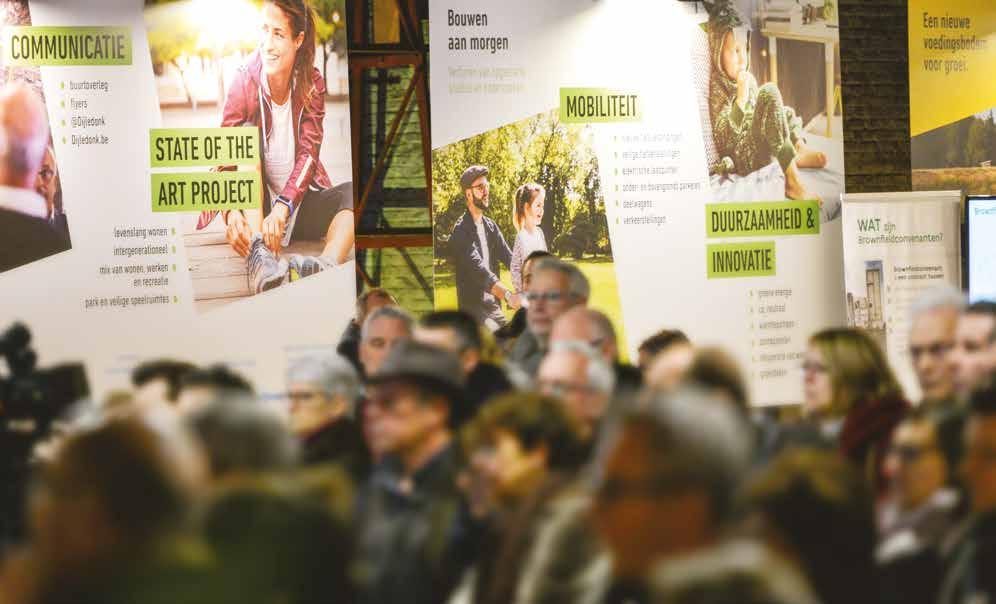
In Mechelen, we’ve started with the reconversion of the Inofer site. Up to 2013, this site contained a press shop for non-ferrous metals and before that, a malt-house and a rubber factory. The site is not only contaminated, it also has the Socaré building that is heritage protected, and other buildings that have to be demolished. Clearly no lack of challenges for PSR here.
A couple of miles along the road, in Rijmenam, by the Dijle river, the iconic furniture factory Meurop has remained empty since it went bankrupt in 1980. PSR will give both these sites a new, mixed life.
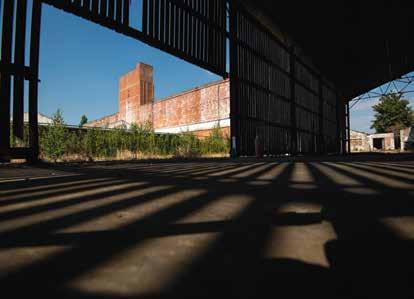
Meurop: PSR is responsible for the redevelopment of the site (30,000 m²) where the iconic furniture manufacturer Meurop was previously based.
These are two examples from fifteen redevelopment projects – covering a total surface of about 75 acres – that PSR is executing in Flanders. In the pipeline, there are a dozen other contaminated sites for redevelopment. From purchasing and remediating the site to its reallocation and redevelopment, PSR takes on the whole project scope. Envisan, the environmental division of Jan De Nul Group, plays a key role in the soil remediation with Jan De Nul as the primary contractor.
The redevelopment of brownfield sites is crucial for safeguarding the scarce open space. The need to start using greenfield sites reduces the more underutilised sites are being redeveloped.
Inofer: The former industrial site is being redeveloped into a residential area with offices.
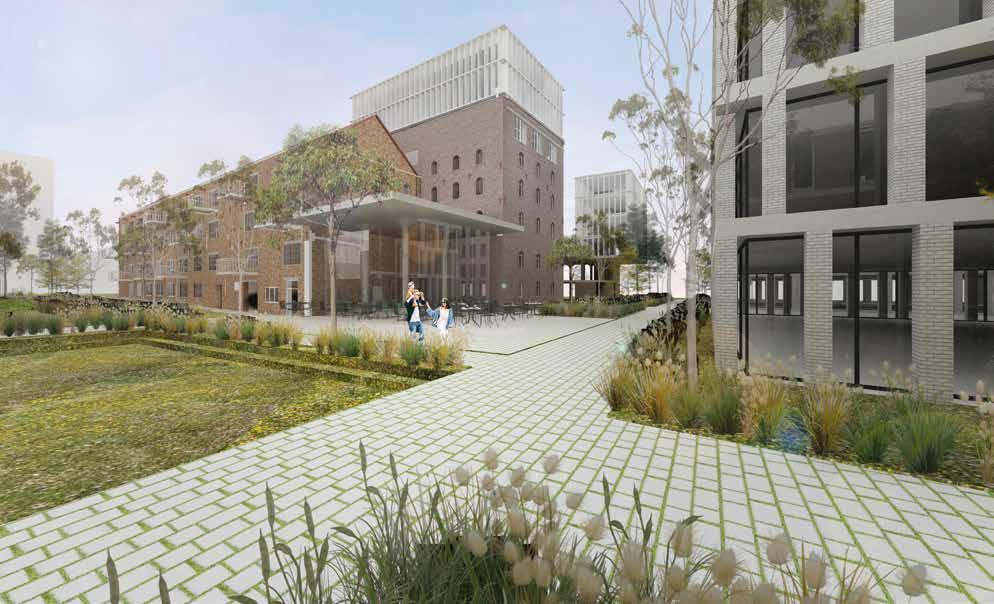
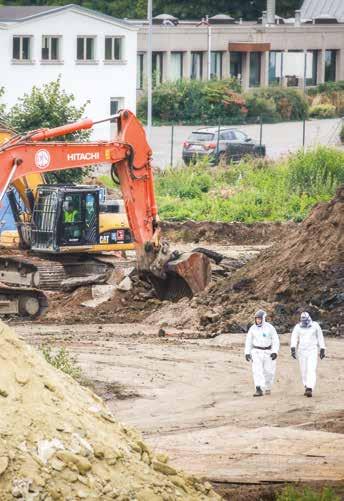
Envisan applies the most sustainable techniques with the lowest possible CO 2 emission and impact on the environment. During earth-moving works in redevelopment projects, this earth is re-used to the maximum extent possible on the site itself. The remediation of the Inofer site entails a combination of excavating contaminated soil and removing it to one of our valorisation centres (for a/o biological and physicochemical treatment) and an in-situ groundwater remediation programme based on recirculation, an innovative technique developed within Envisan.



